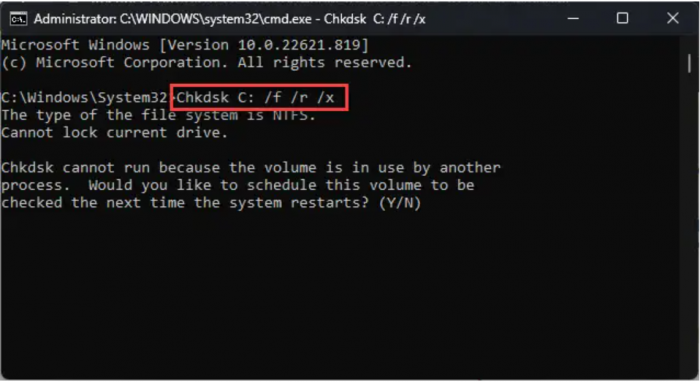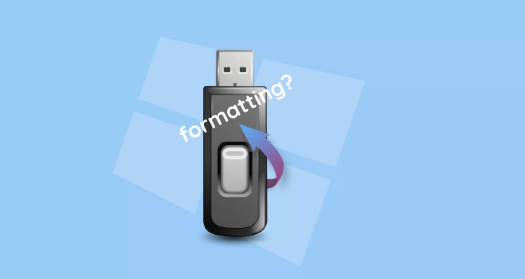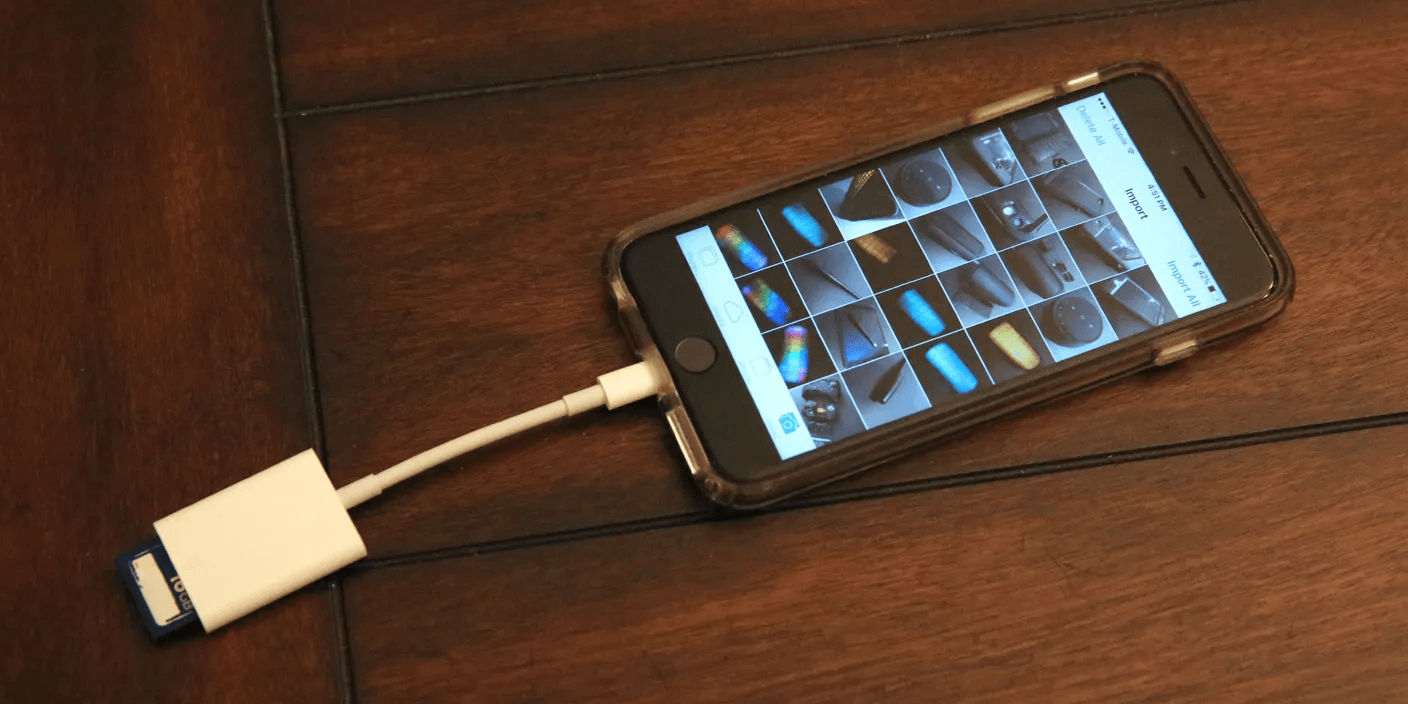System files are kept on disk C on Windows. Labels like “D” and “E” are used for other partitions. Users frequently use Drive D as a supplemental storage space for papers, pictures, movies, etc. Some Windows users, however, have complained that their D drive mysteriously disappeared, leaving them perplexed and irritated.
In this post, we will mention the reasons why the D drive is missing, how to fix the issue and useful tips for maintaining drives on Windows 10/11.
| Solutions | Step-by-step Troubleshooting |
| Solution 1. Reboot the computer | Simply restart the computer and see if the missing partition shows up. |
| Solution 2. Re-scan Disks Using Computer Management | 1. Type diskmgmt.msc in the Run dialog box. …Full steps |
| Solution 3. Restore System | 1. .Type System Restore in the search box > click Create Restore Point from the list. ..Full steps |
| Solution 4. Unhide Hidden Drives | Method 1: Use the Local Group Policy Editor …Full steps Method 2: Use File Explorer …Full steps |
| Solution 5. Assign a D Drive Letter to the Partition | Method 1: Use the CMD diskpart command …Full steps Method 2. Use Disk Management …Full steps |
| Solution 6. Create a New Volume | 1. Type “gpedit.msc” as the pic shows to Disk Management. …Full steps |
| Solution 7. Update Disk Drivers | 1. Type “devmgmt.msc” in the Run Command box to open Device Manager. …Full steps |
| Solution 8. Check by the CHKDSK Utility | 1. Type cmd in the search box on the start menu….Full steps |
| Solution 9. Scan Computer for Malware | 1. Go to the Settings app > Privacy and security …Full steps |
| Solution 10. Recover D Drive Partition | 1. Launch ONERECOVERY and locate the drive to scan. …Full steps |
Step by Step to Fix the Missing Drive D on Windows 10/11
Solution 1. Reboot the computer
Sometimes, a lost D drive might be recovered by simply restarting the computer. It’s possible for the computer to boot improperly and for other drives to be skipped without being noticed. Please restart the computer and see if the missing partition reappears.
Solution 2. Re-scan Disks Using Computer Management
1. Type diskmgmt.msc in the Run dialog box.
2. Click Action
3. Click Rescan Disks.
4. The Disk Management Console will now rescan all attached disks, which will take a few seconds. After that, see if the lost disks appear again.
Solution 3. Restore System
Given that there are enough system restore points, it will be much simpler to restore your computer to the previous state that the D drive is still in if you frequently create system restore points on it:
1. Type System Restore in the search box > click Create Restore Point from the list.
2. Click “System Restore” to start.
3. Do with the instructions to choose the proper system point to restore (takes 10 to 30 minutes).
Tip: System Restore cannot be stopped once it has begun. Close all open programs before the computer restarts.
Solution 4. Unhide Hidden Drives
When dealing with missing drives in Windows 10/11, revealing hidden drives is a helpful fix. Use Disk Management or Command Prompt to unhide these drives. These methods swiftly uncover and grant access to hidden drives, ensuring efficient utilization of your storage resources. We have listed two methods to unhide the drive.
Method 1: Use the Local Group Policy Editor
1. Type “gpedit.msc” in the Run Command box (to open the Group Policy editor.)
2. Locate the path on the left panel: Local Computer Policy >> User Configuration >> Administrative Templates >> Windows Components >> File Explorer
3. Double-click “Hide these specified drives in My computer.”
4. Select “Disabled.”
5. Click Apply and OK.
6. Type GPUpdate /Force in the cmd prompt window
7. When the procedures end, check if the Drive D is showing.
Method 2: Use File Explorer
1. Open File Explorer> click the Options as the pic shows.
2. Go to eh View tab.
3. Enable Show hidden files, folders, and drives under Advanced settings
4. Click Apply and OK.
5. Check if the D drive comes back when all this is done.
Solution 5. Assign a D Drive Letter to the Partition
The drive letter no longer being assigned is the most frequent cause of a D drive suddenly disappearing. It might occur if another external hard drive with the same drive letter is plugged in if the CD/DVD drive has a conflicting drive letter, or if a software malfunction exists. Here, we can use two methods to assign the D drive letter.
Method 1: Use the CMD diskpart command
1. Type cmd in the search box on the Start menu > Run as administrator
2. Type diskpart > press Enter
3. Type list volume to check
4. Select the volume that is missing the D disk letter. Here you can type select volume 1.
5. Enter assign letter=D, to assign letter D to the selected volume.
6. Enter list volume to see if the selected volume appears as a D disk drive letter.
7. When the procedure ends, you can go to eh file explorer to see whether Drive D appears or not.
Method 2. Use Disk Management
Please be aware that this method will function only when the disk letter is removed and the OS still recognizes the drive. The drive won’t appear in the Disk Management Console either if the computer cannot, for some reason, detect the drive at all.
1. Type “gpedit.msc” as the pic shows to Disk Management.
2. Right-click the partition that is missing the letter > click Change Drive Letter and Paths.
3. Click Add.
4. Select a drive letter and click OK.
Solution 6. Create a New Volume
It might be due to the new computer’s single hard disk partition. Therefore, you can divide the disk and create a new D drive if there is some free space on it.
1. Type “gpedit.msc” as the pic shows to Disk Management.
2. Click the C drive > click “Shrink Volume”.
3. Enter the space size of the new drive in the “Enter the amount of space to shrink in MB” row.
4. Click Shrink, and an unallocated disk space will appear.
5. Click on the unallocated space> click “New Simple Volume”
6. Click Next on the New Volume Wizard.
7. Allocate space for the new volume > click Next.
8. Select the drive letter > click Next.
9. Select Formatting Preferences, as shown in the pic > Click Next.
10. Click finish. After all is done, a new drive will appear on your file explorer.
Solution 7. Update Disk Drivers
D drive: A malfunctioning or obsolete disk drive is one potential cause of the unexpected disappearance. To try to fix the issue, follow these steps to update the driver:
1. Type “devmgmt.msc” in the Run Command box to open Device Manager.
2. Find disk drives, and click it.
3. Choose the disk drive, right-click it and update driver.
4. Click “Search automatically for drivers”.
After the update, you’d better reboot your computer. Then see if the D drive shows up.
Solution 8. Check by the CHKDSK Utility
A command line tool built-in Windows called CHKDSK searches a hard drive for damaged files and faulty sectors and tries to fix them. It warns the operating system not to use any damaged sectors it discovers if it cannot restore them. It will detect the hard disk drive if defective sectors bring on the issue. How to use the CHKDSK utility is as follows:
1. Type cmd in the search box on the start menu.
2. Type Chkdsk C: /f /r /x (Replace “C” with the letter D for undetected partitions on the hard disk.)

3. Enter Y.
Restart your computer right now. After restarting, the “Check Disk” utility will launch again and scan the hard drive. It can take many minutes or even hours. Restart Windows after the scan to check if the issue has been fixed.
Solution 9. Scan the Computer for Malware
Partitions may occasionally become hidden due to malware or viruses on your computer. If so, you must eliminate the infection so the hard drive D can start working again. To check your machine for viruses, use the Windows Defender security antivirus installed with Windows. The precise procedure is as follows:
1. Go to the Settings app > Privacy and security > Windows Security > Virus and threat protection
2. Click Quick Scan.
You can also click on the Scan options below it and then do a deep scan of your operating system. Additionally, the scan can be carried out by a third-party antivirus product.
Note: Please note that the above screenshot is from Windows 11. For Windows 10, you can apply the same procedures. If you use Windows 8.1, Windows 8, Windows 7, or other versions, install Windows Defender, Microsoft Security Essentials, or another third-party antivirus program separately.
Solution 10. Recover D Drive Partition
If all the above methods don’t work, you can still use a data recovery application to retrieve data from it. However, you must pick an excellent data recovery tool to complete the task. Consider ONERECOVERY, which has good features, performs well, and is simple to use. You can use it to recover data from corrupted partitions because it supports practically all file types and works with all major file systems. The following steps are simple and do not require the user to have technical expertise.
1. Launch ONERECOVERY and local the drive to scan.
2. Preview the results and choose the file to restore.
3. Save the file to a new location.
Why Does the D Drive Disappear?
When utilizing Windows operating systems, one or more disks could abruptly and silently vanish. The following are some potential causes for the disappearance of your computer’s D disk.
Reason 1. The drive letter is no longer assigned.
The D drive is still present on your computer. Still, the File Explorer cannot recognize it correctly since the letter D has not been allocated to this drive or is already present on another.
How to Fix This: Reassign the drive letter to the D drive using Disk Management in Windows to ensure proper recognition and access.
Reason 2. The drive letter “D” is used for the CD/DVD drive.
Every partition and external drive attached to the computer has a different drive letter on Windows. The computer’s original D drive is not visible if the drive letter is not given or conflicts with the CD/DVD drive or any other external storage drive connected to the PC.
How to Fix This: Change the drive letter for either the D drive or the CD/DVD drive to resolve the conflict and make both visible.
Reason 3. The Disk drive partition is hidden.
You might be unable to view or access the D drive if your system hides it. The method may conceal the D drive to increase system security. Or, if the prior system settings have been changed, it can hide the D drive when installing the most recent software.
How to Fix This: Use Disk Management to unhide the D drive partition, ensuring it’s visible and accessible in File Explorer.
Reason 4. The drive vanished as a result of a Windows update failure.
A system upgrade issue is the most frequent cause of a hard disk disappearing. Suppose your computer’s D drive is incorrectly recognized due to setup changes. In addition, there is no way to predict or avoid problems with missing hard disks due to system upgrades.
How to Fix This: Check for recent system updates or installations that might have caused the disappearance. Rolling back or reinstalling updates might help restore the D drive.
Reason 5. The disk driver is faulty or out of date.
Hard drive and operating system communication is made possible via software drivers. The computer could not even recognize hard drive D if the driver was absent or out-of-date. Using Device Manager, you can manually upgrade the disk drive.
How to Fix This: Update the disk driver through Device Manager to ensure proper communication between the hard drive and the operating system.
Reason 6. Drive corruption.
Additionally, internal problems like software or file system malfunctions, malware infections, or unexpected system breakdowns can cause disks to vanish.
How to Fix This: Run disk diagnostics and repair tools to fix any file system errors or corruption.
Wrap Up
In summary, the sudden disappearance of the D drive in Windows 10/11 can result from various causes like drive conflicts, hidden partitions, updates, driver issues, or drive corruption. Solutions include reassigning drive letters, updating drivers, checking for conflicts, and maintaining backups to prevent such issues. By applying these troubleshooting methods, you can swiftly address the missing D drive and ensure a smoother Windows experience.
I’m thrilled to be part of the OneRecovery team as a writer. I’m passionate about simplifying the complex world of data recovery and making it easy for everyone to understand. My focus? Well, I love diving into tutorials on hard drive recovery, crash computer data retrieval, photo repair, and many more. But that’s not all—I’m all about exploring the creative side too, so expect plenty of engaging and imaginative posts on various aspects of data recovery software. Join me on this journey as I share insights, tips, and tricks that make data recovery a breeze!







